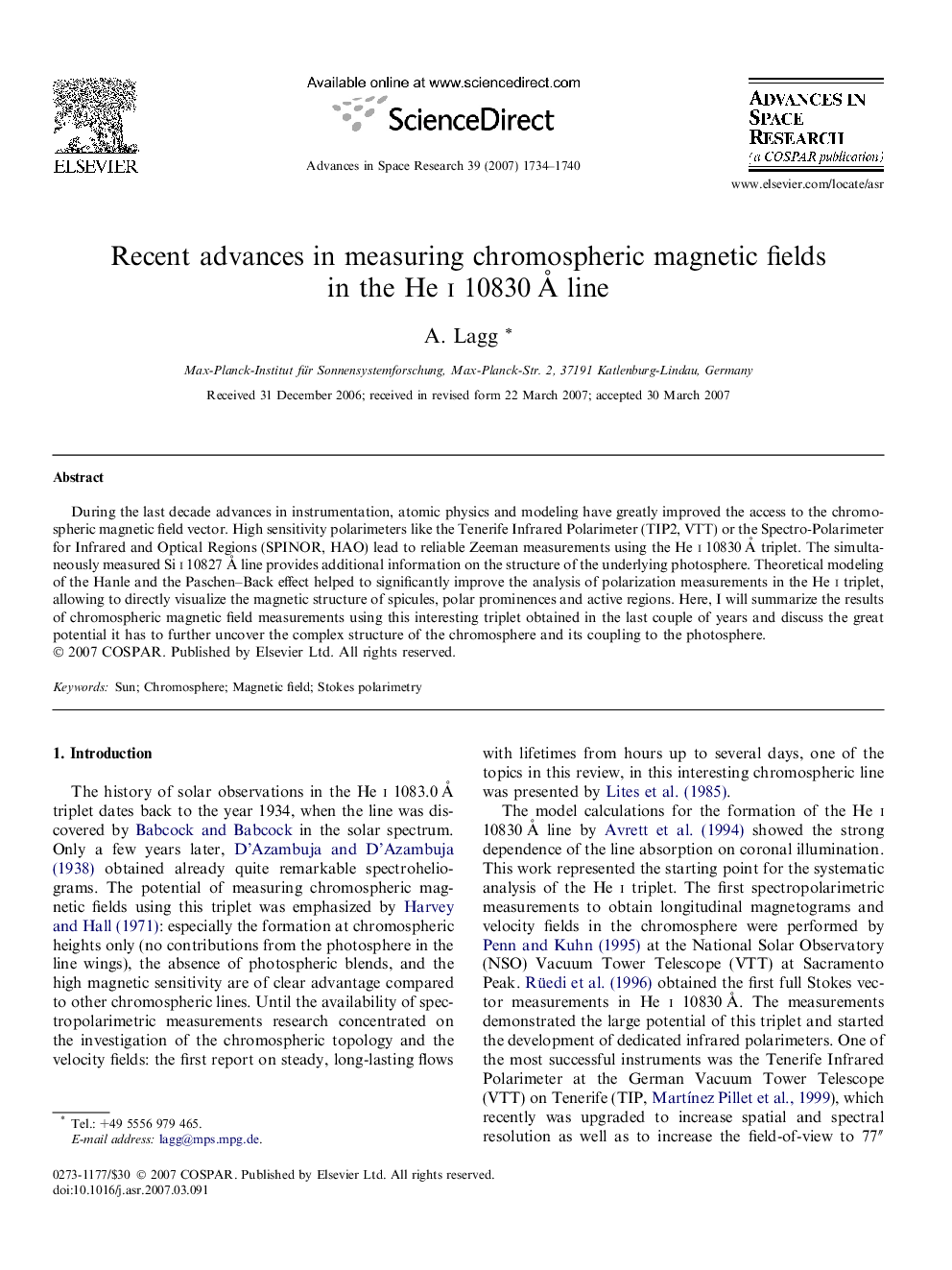| Article ID | Journal | Published Year | Pages | File Type |
|---|---|---|---|---|
| 1768153 | Advances in Space Research | 2007 | 7 Pages |
During the last decade advances in instrumentation, atomic physics and modeling have greatly improved the access to the chromospheric magnetic field vector. High sensitivity polarimeters like the Tenerife Infrared Polarimeter (TIP2, VTT) or the Spectro-Polarimeter for Infrared and Optical Regions (SPINOR, HAO) lead to reliable Zeeman measurements using the He i 10830 Å triplet. The simultaneously measured Si i 10827 Å line provides additional information on the structure of the underlying photosphere. Theoretical modeling of the Hanle and the Paschen–Back effect helped to significantly improve the analysis of polarization measurements in the He i triplet, allowing to directly visualize the magnetic structure of spicules, polar prominences and active regions. Here, I will summarize the results of chromospheric magnetic field measurements using this interesting triplet obtained in the last couple of years and discuss the great potential it has to further uncover the complex structure of the chromosphere and its coupling to the photosphere.
